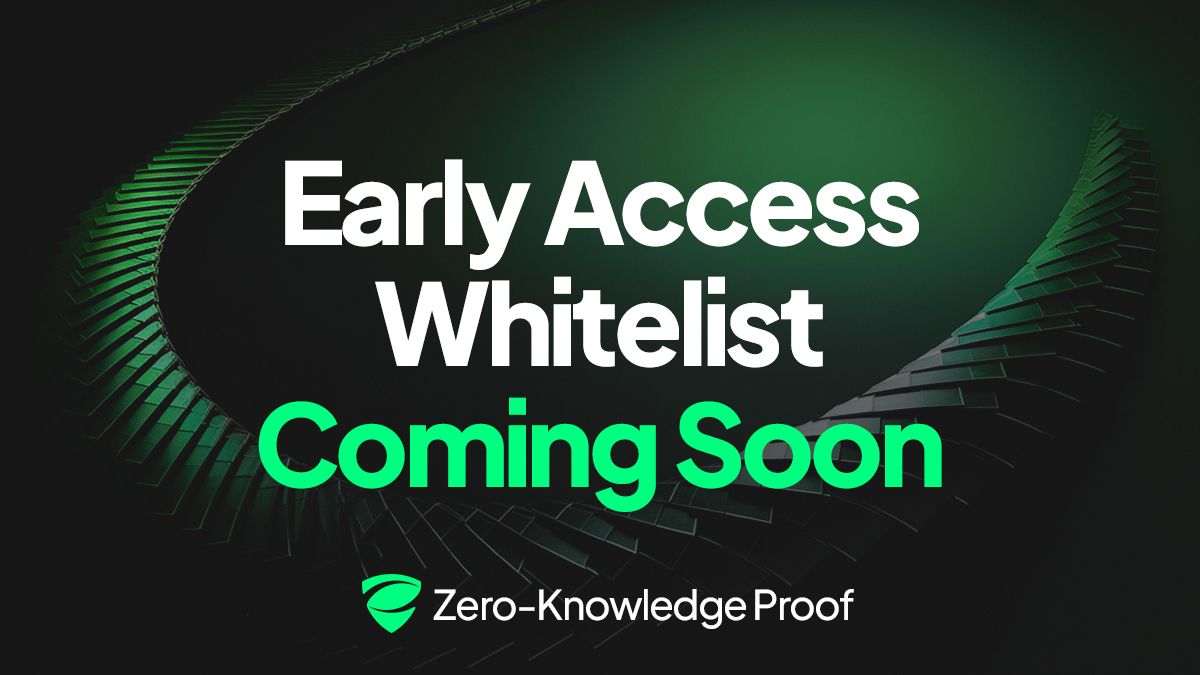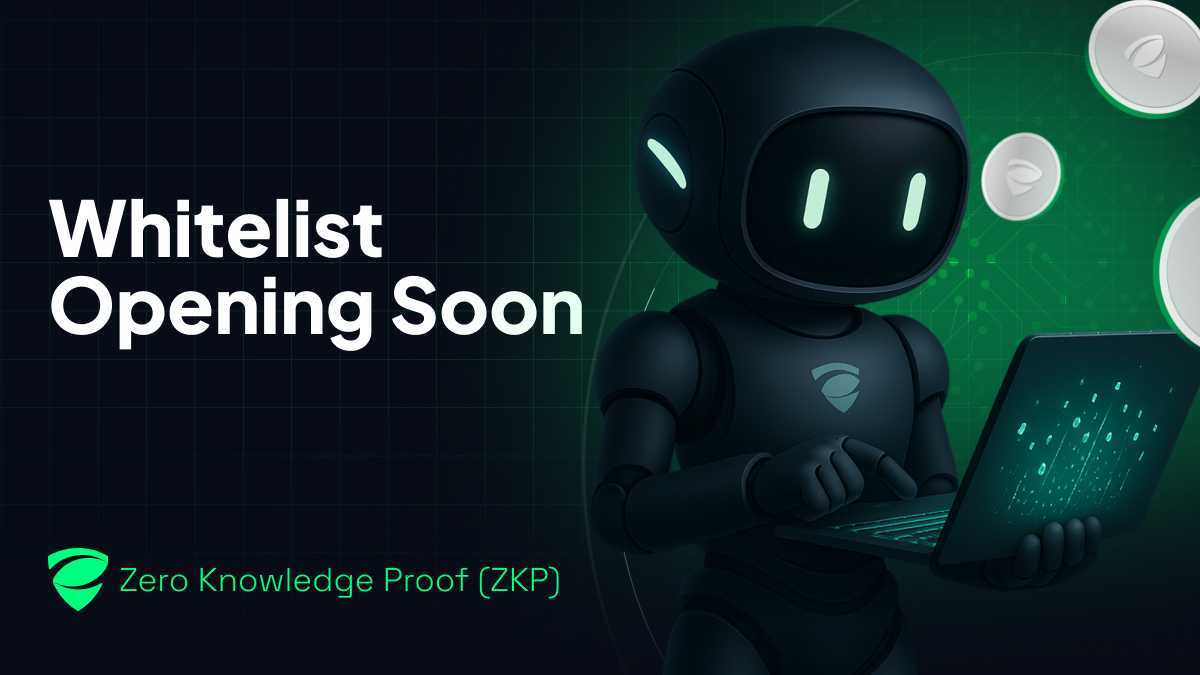Every major crypto network has that one window: short, early, and unforgettable, when retail can enter before the institutions move in. For Zero Knowledge Proof (ZKP), that window is fast approaching.
The whitelist sign-ups will open soon, marking the first time individual investors can position themselves before the project scales into its next growth phase. This isn’t just another launch cycle. The upcoming whitelist of Zero Knowledge Proof represents a strategic checkpoint aligned with ZKP’s roadmap.
ZKP’s built around real adoption milestones: foundation, scaling, ecosystem growth, interoperability, and finally, global expansion. And the advantage is simple: those who act before global exposure get in at presale pricing, securing a foothold in what’s being built as a long-term privacy-first Layer 1 network.
Building the Foundation: Zero Knowledge Proof’s Core Architecture
The journey begins with infrastructure. Zero Knowledge Proof (ZKP) was designed from day one as a modular Layer 1 chain, not a fork or add-on. Its architecture is centered on privacy, scalability, and usability. By using zk-SNARK proofs, ZKP achieves both transaction confidentiality and rapid verification speeds.
At the foundation phase, three pillars drive its stability:
- Privacy Layer: Shielded transactions protect both identity and on-chain activity.
- Consensus System: A hybrid Proof-of-Intelligence and Proof-of-Space mechanism that validates AI-driven computations and rewards nodes for contributing compute and storage resources.
- Developer Stack: An EVM-compatible framework that supports smart contracts without sacrificing confidentiality.
These features aren’t theoretical. They form the groundwork for the upcoming phases of the roadmap. For early participants, this is the proof that ZKP is not building hype; it’s building infrastructure. With the whitelist slots set to open soon, the foundation phase offers the earliest possible entry before enterprise use cases begin scaling globally.
The Scaling Phase: Where Efficiency Meets Expansion
After establishing the base layer, Zero Knowledge Proof (ZKP) moves into the scaling phase. This stage focuses on throughput and economic efficiency. Using recursive zk-proofs, the network can validate multiple transactions simultaneously, compressing network data while keeping performance high.
What makes this phase crucial:
- Enhanced TPS (Transactions per Second) for mass-market dApps
- Fee Compression, lowering the cost per transaction
- Validator Incentives tied to privacy compliance and uptime
Scaling is not just technical; it’s strategic. It prepares the network for the ecosystem boom that follows. Retail investors who enter during the whitelist phase gain exposure to a blockchain before transaction volume and ecosystem adoption multiply.

Timing is everything in crypto. ZKP isn’t waiting for the world to catch up; it’s creating the infrastructure that makes large-scale privacy DeFi possible. The whitelist will open soon, providing a brief window to join before scaling accelerates user growth and visibility.
Ecosystem Growth: The Stage of Real Utility
When the scaling framework stabilizes, Zero Knowledge Proof (ZKP) enters ecosystem growth mode. This is where dApps, DeFi protocols, and partnerships converge to form an active network economy.
The ecosystem is expected to expand across several verticals:
- Shielded DeFi Protocols: Lending, swaps, and liquidity pools operating with full transaction privacy.
- DAO Governance: Quadratic voting and zk-auditable ballots ensure transparency without identity leaks.
- Treasury Deployment: Grants and incentives for developers building privacy-native applications.
This phase is about real utility, not speculation. Ecosystem growth is what transforms early backers into stakeholders of a functioning network economy. The upcoming whitelist launch gives retail access before this transformation becomes visible on the market. By the time ZKP enters its interoperability and expansion stages, entry prices will likely move closer to institutional levels.
Interoperability and Global Expansion: The Endgame of Integration
Every successful blockchain must bridge beyond itself. The final phase of Zero Knowledge Proof (ZKP) blockchain focuses on interoperability, connecting to other ecosystems while retaining privacy standards. This involves multi-chain support, zk-bridges, and enterprise-grade cross-chain compliance. Once ZKP becomes interoperable, it unlocks three massive shifts:
- Enterprise Adoption: Businesses can operate confidentially without exposing sensitive data.
- Institutional Entry: Compliance-ready privacy systems make ZKP suitable for regulated environments.
- Global Rollout: A network ready for global transactions, private voting, and data-secure applications.
At this stage, the network’s user base will likely transition from early adopters to mainstream participants. For retail investors, the whitelist, set to open soon, is the chance to be positioned before this institutional curve begins.
Countdown to Zero Knowledge Proof (ZKP) Whitelist Window
The Zero Knowledge Proof (ZKP) roadmap isn’t just a promise. It’s a sequence of real, technical milestones designed to scale from foundation to global integration. Each stage builds on the previous one, creating a compounding effect that strengthens the ecosystem with every new participant and application.
But before all of this unfolds at scale, one moment matters most: the whitelist will open soon for sign-ups. It’s not live yet, but it’s coming; the narrow window where retail can secure presale positioning before enterprises and institutions enter. For a network engineered to balance privacy, scalability, and governance, this is the earliest and most strategic entry point.
Those who understand that timing defines opportunity will see Zero Knowledge Proof (ZKP) for what it is: a chance to step in before the expansion begins while the whitelist window is open.
Disclaimer: This is a Press Release provided by a third party who is responsible for the content. Please conduct your own research before taking any action based on the content.






